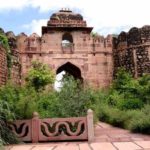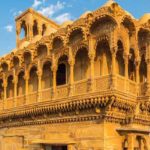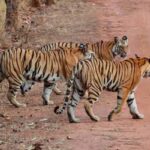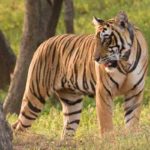Desert National Park is among the largest of its kind in the country, encompassing an area of 3162 sq kms. The park covers a huge area extending from Jaisalmer/Barmer all the way to the India-Pakistan border. In spite of being right in the middle of an arid, dry, and sandy desert, the desert national park presents a wonderful opportunity to see the wildlife such as camels, desert fox, Bengal fox, chinkara, wolves, desert cat, and the Blackbuck. The intriguing landmark offers everything one can expect from a desert ecosystem, craggy rocks and compact salt lake bottoms, intermedial areas and fixed dunes. The dunes consist of about 20% of the park.
The entire area is covered with thorny bushes, cacti and a few desert plants. If you want to explore the majestic wildlife at the Desert National Park, then the best way to do so is by going for an adventure-filled jeep safari which will be an entirely new exciting experience. It is located close to the mighty Thar desert and defies all stereotypical notions of the non-existence of flora and fauna in the deserts. As, even though the ecosystem is harsh and fragile, it houses an abundance of birdlife and is a haven for a variety of migratory and resident desert birds. One of the rarest species of birds, The Great Indian Bustard is found here.
Apart from that various eagles, harriers, falcons, buzzards, kestrel, vultures, Short-toed eagles, tawny eagles, spotted eagles, laggar falcons and kestrel can also be seen here. One can see the life forms continuously fighting with the harsh environment to survive and prevailing to create yet another marvel of nature. Apart from the magnificent birds, the desert park also has a collection of fossils of animals and birds, some of which are more than 180 million years old. Some 6 million-year-old fossils of dinosaurs have also been found in the area. Visiting the desert national park to witness the mighty birds soaring in the sky while marvelling the changing landscape of the desert is definitely one of the best ways to spend holidays.
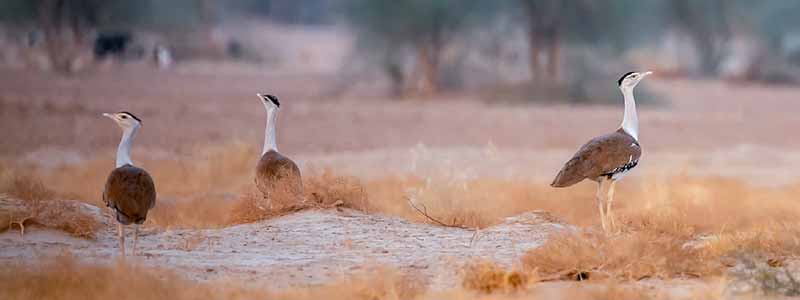
History
The Thar Desert’s vast stretches of sand are interspersed by hillocks, rocky areas and sandy and gravel plains. It is spread across 200,000 sq.km, of which more than 60 percent of the desert lies in Rajasthan alone, while the rest extends into Gujarat, Punjab, and Haryana.
In 1980, a portion of it was declared the Desert National Park, which is spectacularly representative of this desert ecosystem. The highlight here is the critically endangered Great Indian Bustard, which has been extirpated from 90 percent of its former range Jaisalmer Tour Packages.
There are approximately 73 villages and also settlements or Dhanis existing within the Park. Of these villages, Sudasari is the prime location for Great Indian Bustards.
Apart from the GIB, this seemingly inhospitable ecosystem hosts a variety of bird species, both migratory and resident. Chinkaras run loose on sand dunes, Desert and Indian Foxes bask in the morning sun and Desert Cats make bold appearances out of their burrows during the day.
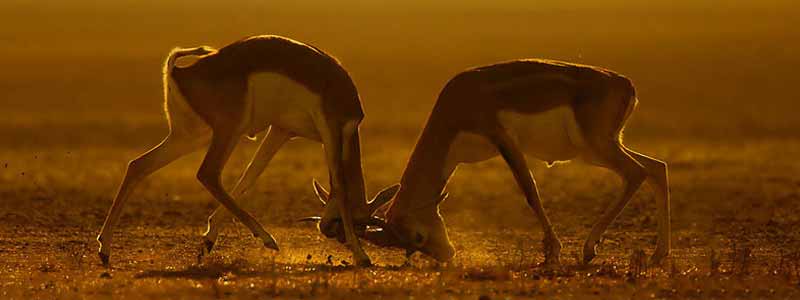
Flora and Fauna at Desert National Park
Excited to know more about the Desert National Park? Let’s peep into its flora and fauna first –
- Animals –
Desert monitors, deadly vipers, spiny-tailed lizards, Krait, and sandfish are the prominent members of the wildlife family.
If you are fortunate enough to be there on time, you can even spot on Desert and Bengal foxes munching on some fresh berries. Apart from these key animals, the Desert National Park also shelters Vulpes, Blackbuck Antelope, Gazelle gazelle, Desert Cat Felis Libyes, and Cervicapra Rajputana Chinkara.
- Birds –
As stated early, this park is never-ending heaven for all bird lovers. Desert National Park of Jaisalmer is known to house 150 different varieties of residential and migratory birds. It is a common phenomenon to locate endangered species of The Great Indian Bustard.
Amongst the other common species you have – Demoiselle, Eagles, Falcons, Partridges, Bee-Eaters, Vultures, Larks, Shrikes, Macqueen’s Bustard. As you move on to the next section of the park, you will come across some ponds and waterholes. Larks and wheatears are common species to be located here.
- Reptiles –
Not all, but Desert National Park has surely got several reptile species to exhibit before you. Monitor lizard, Spiny-tailed lizard, Russell’s viper, Saw-scaled viper, common krait are few of the reptile species to be traced here.
- Vegetation –
Although a sparse one, you still can find a variety in the vegetative species at the Desert National Park. Prominent amongst the vegetative species are aak shrub, sewan grass, and cacti.
It has got a well-diversified desert type of landscape where you have small salt lake bottom, fixed and shifting dunes, and craggy rocks.
While strolling through the park, do not forget to raise your head high above the sky. You will be surprised by the number of vultures soaring high to present a delightful sight Jaisalmer Monuments.
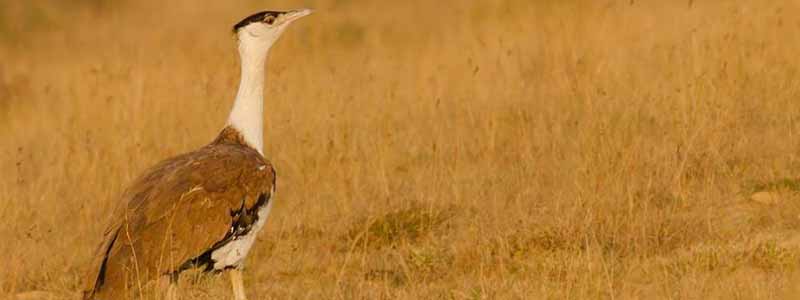
Best Time To Visit Desert National Park
The best time to visit the park is from October to March. Given the climate, it is not advisable to travel to the region in summers. The daytime temperature remains very high and usually touches around 42 degrees in summer. Nights are relatively cooler, typical of the arid desert climate. Winters in Jaisalmer are comparatively cooler with day temperatures remaining pleasant at around 24 degrees Celcius and the nights are chilly with the temperature falling as low as 7 to 8 degrees Celcius. As Jaisalmer is situated in the middle of Thar Desert, the monsoon is almost negligible. Jaisalmer remains dry for most parts of the year.
How to reach Desert National Park
Air: Though Jaisalmer is not directly connected to Airways, Jodhpur airport which is 300 Km away is the nearest airport. From Jodhpur you can hire Cabs or take a train journey to reach Jaisalmer.
Rail: Jaisalmer railhead is the nearest railhead to Desert National Park. You can also travel to Jaisalmer by the exotic Palace on Wheels.
Road: Jaisalmer is well connected to the rest of state by roads. Deluxe & Ordinary buses of Rajasthan Roadways & Private companies run from Jaisalmer to Jodhpur, Jaipur, Bikaner, Barmer, Mount Abu, Jalore, Ahemdabad etc., Roadways main bus stand opposite Railway station & Golden bus terminal near State Bank of Bikaner and Jaipur, Shiv road, Jaisalmer are the two main bus stands.

